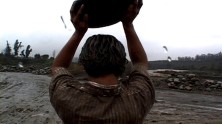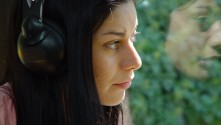
El Pejesapo
With Héctor Silva, Jessica Calderón, Yani Escobar.
Chile, 2007, DCP, color, 98 min.
Spanish with English subtitles.
DCP source: Filmmaker
In José Luis Sepúlveda’s sprawling urban tale, the camera moves around its characters like breath traveling through the body. A middle-aged man who has lived in the area close to the Río Maipo near the south of Santiago, Daniel is faced with the limitations of his rural life after a suicide attempt and—while confronting his friends, family, and community members—is forced to leave home and find his way through Santiago. His journey takes him through the city’s commercial centers, sites of queer performance and, in the film’s final moments, electrifying left-wing protests. Senses become magnified in this film as the fluid, roving camera allows us to see the extremes of digital cinema. The script, a mixture of documentary and fiction, interrogates issues of sexuality and transgender identity in Chile, posing the broader question of how, when, and where these characters can freely express their desires. Daniel’s meditations are manifold as he tries to find employment, embed himself in the urban environment, and find love while confronting the anti-trans sentiment of his world. By the end of the film, he talks to the camera directly, allowing audiences to inhabit his memories, fears and hopes. Despite the constant close-ups and nervy sound design, the film is remarkably noninvasive: showing people who are always on the move, exploring their perspectives with honesty and passion, and finding their light. – Alejandro Eduarte
















